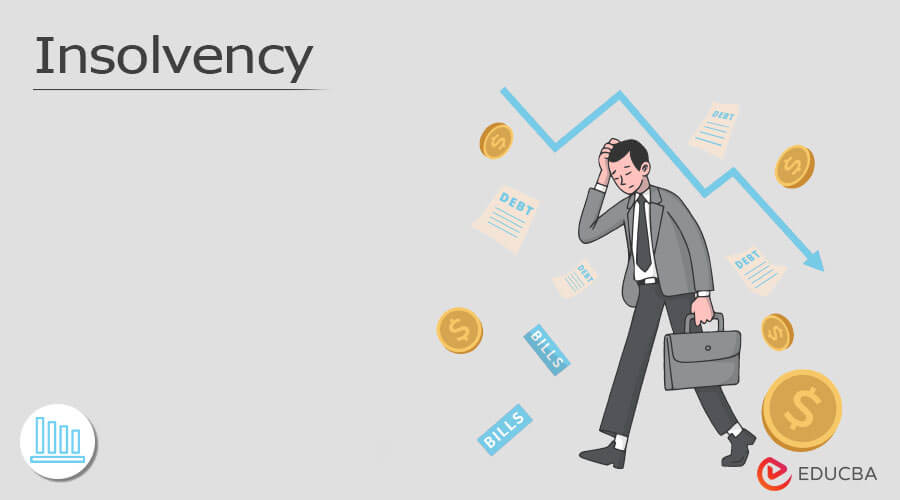6 Simple Techniques For Insolvency Practitioner
Getting My Insolvency Practitioner To Work
Table of ContentsThe 10-Second Trick For Insolvency PractitionerNot known Facts About Insolvency PractitionerThe Ultimate Guide To Insolvency PractitionerInsolvency Practitioner for DummiesOur Insolvency Practitioner PDFsThe Best Guide To Insolvency PractitionerUnknown Facts About Insolvency Practitioner
Bankruptcy is when liabilities are higher than the worth of the firm, or when a borrower can not pay the financial debts they owe. A company can end up being financially troubled as a result of a variety of scenarios that lead to bad money circulation. When confronted with bankruptcy, an organization or person can contact creditors directly and restructure financial obligations to pay them off.Bankruptcy can cause bankruptcy process, in which lawsuit will be taken against the insolvent person or entity, and assets might be sold off to pay off arrearages. Company owner might get in touch with financial institutions directly and restructure financial debts right into more manageable installments. Financial institutions are generally amenable to this method because they wish to be settled and stay clear of losses, even if the repayment gets on a delayed schedule.
The Of Insolvency Practitioner
The owner develops a proposal outlining exactly how the financial obligation might be reorganized using cost reductions or other strategies for assistance. The proposal shows lenders exactly how business may produce sufficient cash money flow for rewarding procedures while paying its debts. Normally, a forgiven financial debt may be considered revenue by the Irs (INTERNAL REVENUE SERVICE).

All About Insolvency Practitioner
The service might wind up paying big amounts of money in damages and be overcome operations. When operations cease, so does the company's income. Lack of revenue causes accounts payable and financial institutions asking for cash owed to them. Some business end up being financially troubled because their goods or solutions don't develop to fit consumers' changing demands.
Expenses exceed profits and bills continue to be unpaid. Sorts of insolvency include cash-flow bankruptcy and balance-sheet insolvency. Cash-flow bankruptcy happens when a company has the properties to cover their financial obligations but they remain in the wrong kind, such as genuine estate instead of liquid funds. Balance-sheet bankruptcy, on the other hand, indicates an absence of possessions in any kind of type to cover debts.
The IRS states that an individual is insolvent when the total responsibilities exceed overall properties. A bankruptcy, on the various other hand, is a real court order why not try these out that portrays exactly how a financially troubled individual or business will settle their creditors, or exactly how they will market their assets in order to make the settlements.
Getting The Insolvency Practitioner To Work

Understanding the aspects that can lead to bankruptcy, such as overspending, can aid you stop insolvency and its effects.
Unknown Facts About Insolvency Practitioner
It is popular that directors and policemans of companies (and supervisors of minimal responsibility firms) owe fiduciary responsibilities to their organizations and their investors (or participants). These fiduciary responsibilities are specified by state laws and, though there are variants from one state to another, they normally include a responsibility of loyalty and More Bonuses a task of treatment.
The responsibility of care needs directors and officers to exercise diligence, to make enlightened choices, and to act in excellent confidence to make sure that their actions are in the most effective rate of interest of the business. Though past the extent of this discussion, some states enable these tasks to be limited either by so noting in the organizational papers or adhering to various other requirements.
Insolvency Practitioner for Dummies
Many states define bankruptcy in two methods( 1) when a company's liabilities become higher than the sum of its possessions or (2) when the business comes to be incapable to pay its financial debts as they come to be dueand embrace both definitions (Insolvency Practitioner). The change in tasks occurs because when a business is insolvent, there is no value in the business past that owed to the firm's creditors to make sure that the equity holders no longer have a financial risk in the firm
Be cautious about giving shareholders favoritism at the expense of lenders (e.g., authorizing and moneying a returns or a stock redemption). Be careful about special therapy between courses of investors. Clear up efforts to discover all the realities before taking a particular course of action; supervisors need to genuinely think that any kind of choices made remain in the most effective rate of interests of the company in its totality (i.e., choices will be evaluated in knowledge because of the effect of such actions on the corporation).
In any kind of bankruptcy or insolvency case, payments made to specific creditors at the expenditure of various other financial institutions can be clawed back, specifically if there is some connection between the firm and the lender. Consider proposing at an annual stockholder conference (or any more helpful hints kind of various other meeting of stockholders) a resolution verifying that all prior service decisions and actions taken by the supervisors and officers of the firm were absorbed good confidence after a workout of practical treatment.
The Definitive Guide for Insolvency Practitioner
Fully reveal any kind of personal or service relationships with parties on the other side of deals involving the company to prevent the appearance of a conflict of passion. In examining potential fund increasing transactions or a sale of properties of the troubled corporation, realize that these deals may be inspected later because of any type of subsequent development of directors' fiduciary duties to consist of financial institutions.